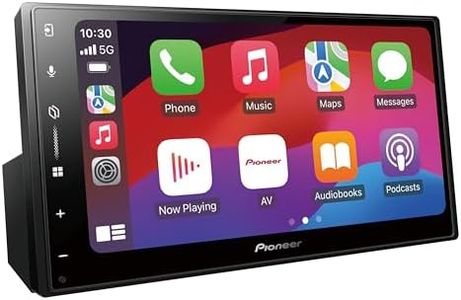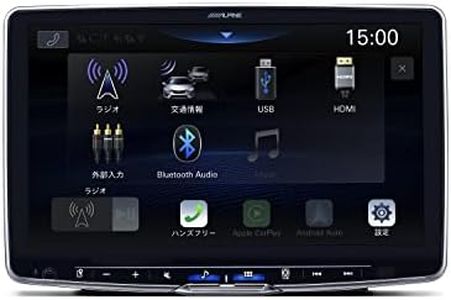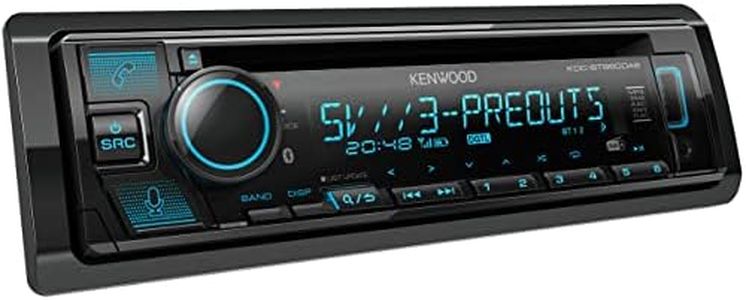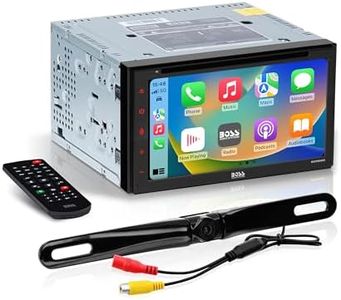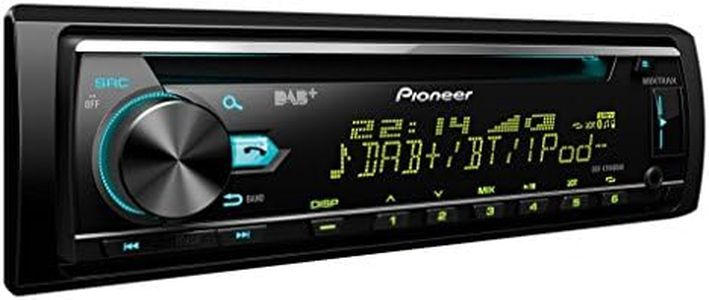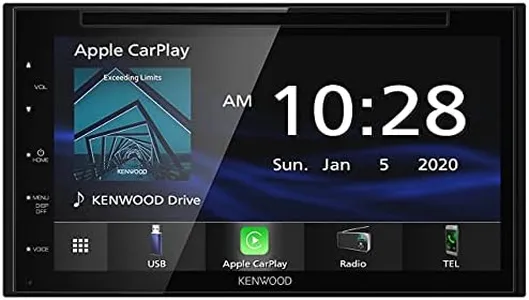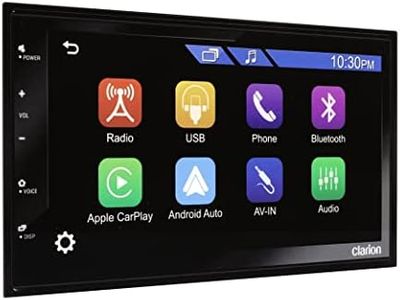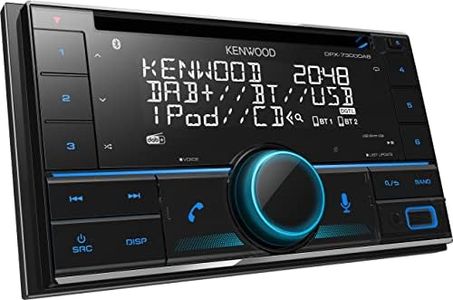We Use CookiesWe use cookies to enhance the security, performance,
functionality and for analytical and promotional activities. By continuing to browse this site you
are agreeing to our privacy policy
10 Best Car Radios
From leading brands and best sellers available on the web.Buying Guide for the Best Car Radios
Choosing the right car radio can make your driving experience much more enjoyable and convenient. With so many options on the market, it's easy to get overwhelmed by the different features and specifications. The best approach is to first think about how you use your car and what you expect from your car radio—do you mostly listen to music, need hands-free calling, want to connect your phone, or just prefer basic functionality? Learn about the key specs below to help you make an informed choice that matches your needs.Audio Sources SupportedThis refers to the types of media you can play through your car radio, such as FM/AM radio, CD, USB, Bluetooth, or AUX input. It's important because more audio sources mean more flexibility in how you listen to music or podcasts. Some radios only support traditional radio, while others let you play music from your phone, a USB stick, or other devices. If you mainly use streaming services or have your music collection on a smartphone, a radio with Bluetooth or USB support might be best. If you just want simple radio and CDs, make sure those options are included.
Connectivity OptionsConnectivity covers features like Bluetooth, USB ports, SD card slots, and compatibility with Apple CarPlay or Android Auto. Connectivity matters because it determines how easily you can link your phone or other devices for music, navigation, or hands-free calls. Some radios have only basic wired connections, while others offer advanced wireless capabilities. If you want to use your smartphone for navigation or calls, choose a radio with Bluetooth and support for your phone's platform. For simple use, basic USB or AUX may be enough.
Display Type and SizeThe display on a car radio can range from simple single-line text screens to large, colorful touchscreens. This spec matters for both ease of use and safety, letting you quickly see song info, caller details, or navigation directions. Smaller, simpler displays are found in basic models and fit easily into older cars, while bigger touch displays offer more features like touch controls and integration with phone apps. If you need navigation or like using apps, a larger touchscreen is better. For straightforward listening, a standard display is just fine.
Power OutputPower output is a measure of how much audio power the radio can deliver to your car speakers, usually shown as watts per channel. More power can mean louder and clearer sound, especially if you like high volume or have upgraded speakers. Radios with low power outputs are good for casual listening with standard speakers, while higher-powered units are better if you want louder sound or have invested in premium speakers.
Preamp OutputsPreamp outputs are connections that let you hook up external amplifiers or subwoofers. This is important if you plan to build a more advanced sound system in your car. Basic units may have no or just one preamp output, which is fine for regular use. Enthusiasts or those wanting to add multiple amplifiers or subwoofers should look for radios with two or three preamp outputs.
Ease of InstallationSome car radios are designed for easy plug-and-play installation, while others may need more technical skill or modifications to fit in your car. This spec is important if you plan to install the radio on your own. Simpler 'single DIN' units are universal and easy to fit in most older cars, while bigger 'double DIN' touchscreens may require new dash kits or professional installation, especially in older vehicles.
User Interface and ControlsThis includes the physical buttons, knobs, and touchscreen functions available to control the radio. A good user interface makes it safer and easier to use the radio while driving. Some radios have lots of physical buttons for quick access, while others rely more on touchscreen controls. If you prefer a simple control layout while driving, look for larger buttons and simpler menus. For more advanced features, a touchscreen might be more convenient but may require more attention.


